|
82nd Airborne Division
101st Airborne Division
6th Airborne Division
Allied Gliders
Home-page 'Battlefield Normandy'
INTRODUCTION
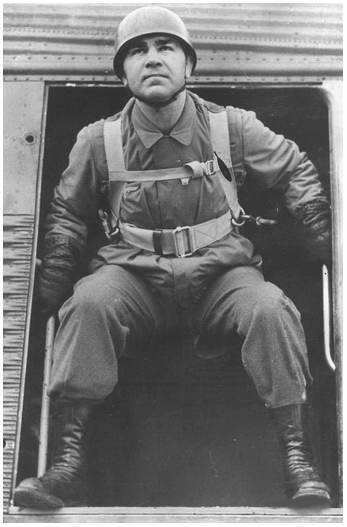
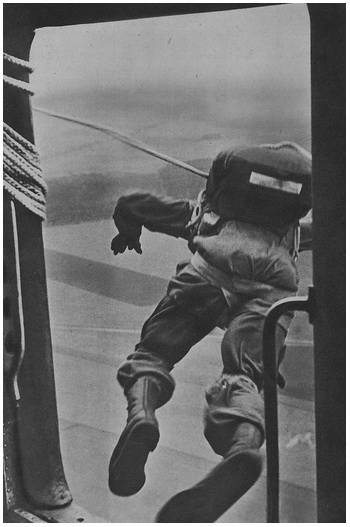
Former German heavy weight boxing champion, Max Schmeling.
demonstrates himself as a Fallschirmjäger
He jumped on May 20, 1941, during the attack on the Island of Crete, as part of
4. Kompanie/1. Bataillon/Fallschirmjäger-Regiment 3/7.Flieger-Division
After tests by Russia and Italy, is it Germany who, at the
end of the thirties, introduced the
parachutist as a new weapon. The
'Fallschirmjäger' dropped behind enemy lines had a
strategic freedom which was an overwhelming demotivation
for the counterpart. When Winston Churchill
notices the fighting potential of the German
paratrooper in Holland and Belgium, he
presses for a same unit in Great Britain. The British
developed a new parachute, the so-called
'X-model'.
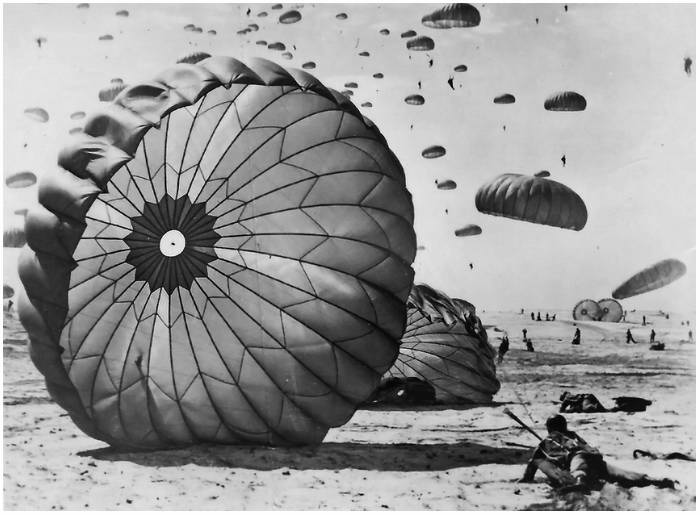
The X-Model was also used by the American airborne units
This was a parachute that
deployed gradually and was less straining on the body, in
contrary with the German that opened with a hard
jerk. Was the German paratrooper hanging as
a ragdoll under his chute, the British
variant gave the paratrooper some sort of stable
position during the descent, thanks to the positioning of
the straps. The straps came together in one
clasp that could be released with one smack
after landing. The paratrooper could release
himself fast from his gear. The 'X-model' was built
from 28 segments, that together made a 8.50 metre wide
parachute. Every segment was built up from
four strips. The outer strip was woven
tighter than the inner strip (the top), so
the air could gradually escape through the fabric and this
prevented swinging (see the outline below on the
left). The Americans used the same parachute
as the British during World War Two.
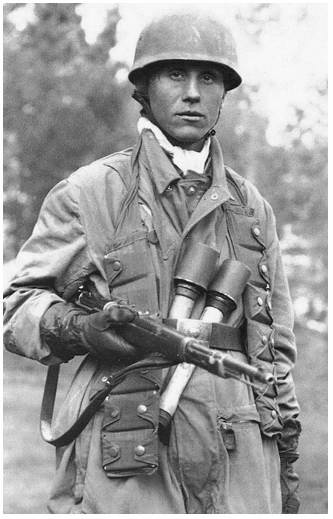
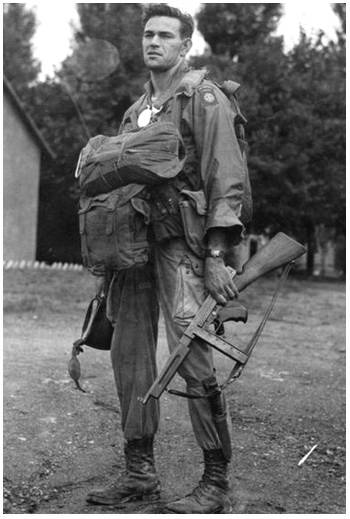
Fallschirmjäger (left) and the this American paratrooper (82nd Airborne Div.),
Standing tall,… those men are ‘fighting machines’
The German and American paratrooper folded their own
parachute, the British left this to a woman, the
WAAF (Woman Auxiliary Royal Air Force). This
saved a lot of time in the education,
because there was no individual training in this
procedure. The biggest problem during operating with
paratroopers was the transport of sufficient
supplies. The paratrooper carried usually
just his rifle or a sub-machinegun.
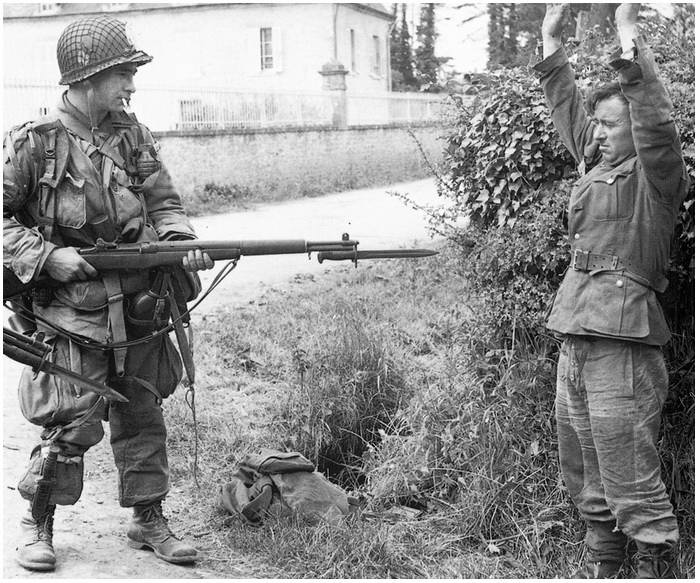
Turqueville, June, 6, 1944; 'They don't like it
up'm, the cold steel!'
This paratrooper holds this German at bay with his
M1 Garand with the bayonet fixed.
An MKIIAI hand grenade hangs in his M1936 fighting webbing, and on his ankle
an M3
dagger. He also has a German cantine onto his
M1936 pistol belt
For the first fast action the personal weapon was enough,
but in the long term the heavy weapons were
indispensable. These had to be dropped by
special delivery. Germany developed a
container with a length of 1.20 metre that was carried under
the wing of a Ju52. This went almost terribly
wrong when the Germans invaded Crete. There
was valuable time lost during the search for
these containers (one of the reasons Hitler lost
its confidants in this elite corps).
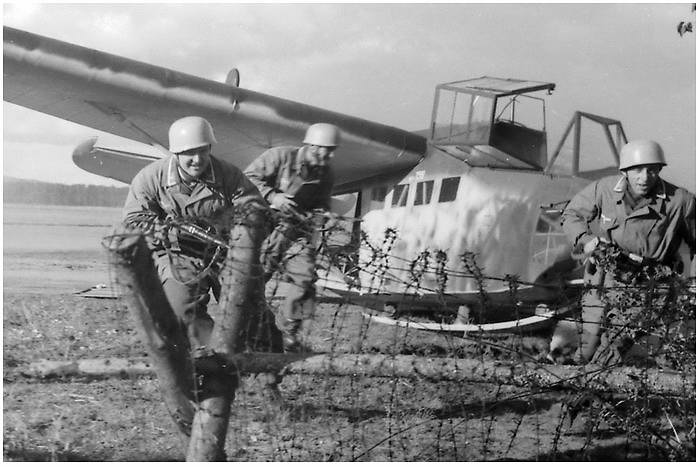 A posed picture of a Fallschirmjäger and a DFS 230 glider
A posed picture of a Fallschirmjäger and a DFS 230 glider
The Allied forces had the same
problem, they gave the paratrooper an extra package of 50 kg
that was tied to the leg. Unfortunately this package was often
lost during the jump when it was jerked from the leg. To bring
in the necessary heavy weaponry and other supplies the allies
used great numbers of gliders and transport planes. The
Germans used gliders as well, such as the DFS 230,
but far too few to supply the 'Fallschirmjäger'
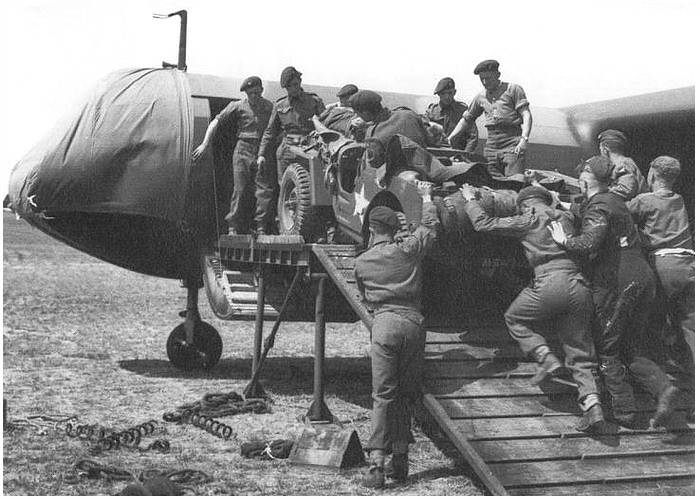 During an exercise a Jeep is loaded into a Horsa glider
During an exercise a Jeep is loaded into a Horsa glider
On D-Day there were three airborne
divisions active, the American 82nd and 101st
Airborne Division and the British 6th
Airborne Division. Despite of the losses
that the Americans suffered on the peninsula Cotentin,
the both divisions were of great value. The
protection they gave to the amphibious
landings was invaluable. The losses on UTAH Beach were very slim.
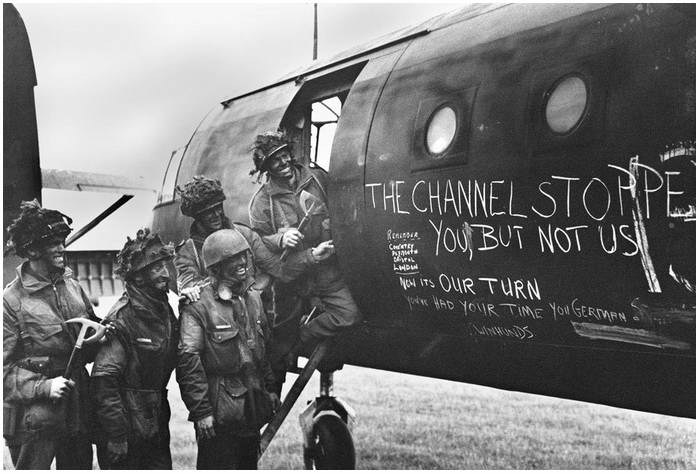 A clear message, British para’s on their way to main land Europe
A clear message, British para’s on their way to main land Europe
Just
as in the British sector where the 6th Airborne
Division was operating east of the Orne. The
sending in of these divisions prevented that
the Germans could bring in reinforcements from
the rear and the east and west flanks. This brings me to the
question: Why were there no airborne units
dropped behind OMAHA Beach? Without the threat
of attacks from the rear, the German troops
could focus on the destruction of the
amphibious landing over there. The German
reinforcements that were brought in, had not to deal with the
interference from behind enemy lines dropped
allied units. Is it possible that if there
were paratroopers dropped at the rear of
OMAHA the landing on the beach would have been easier
and less bloody, like UTAH and the British SWORD
sector? (This with the note that, especially
the American para-divisions on the Contentin
had enormous losses, due through drowning and
crashing gliders.
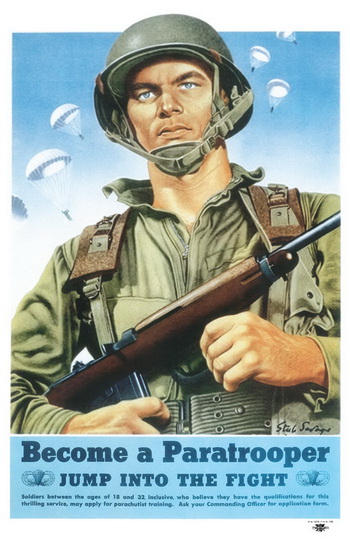
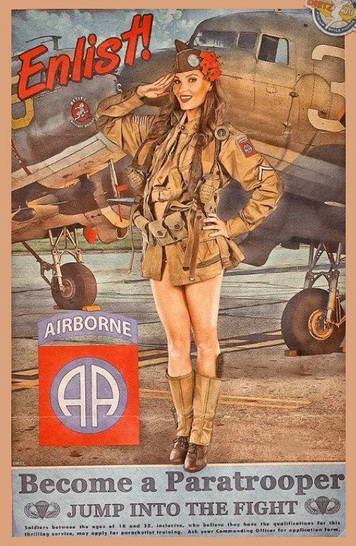
Posters were used to get young men into the elite units,…
Finally, I like to bring your attention to a something odd. It remembers the German'Fallschirmjäger'in
a strange way. There are still propaganda CD’s for sale with old songs on these fighting units. Songs as
Auf Kreta im Sturm undim Regen,
Wirsind die MännervomSchirmer, Es donnern die Motoren, Unsgehört der blaueHimmel,
FallschimjägersindmutigeGesellen,
Wirtragen nicht Schmuckund Orden schwer, Wirsind die grünenTeufel, Fallschirmschützentretetan,
Abgeschmiertaus 100 Metern and Ichhatt´ einen Kameraden are obvious enough.
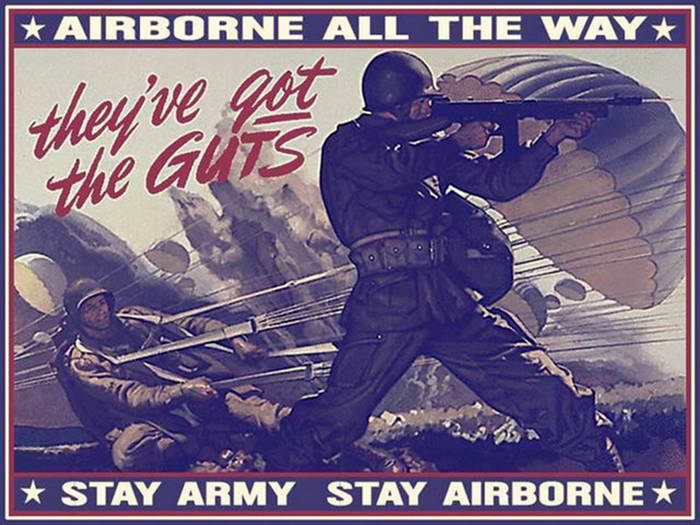
82nd Airborne Division
101st Airborne Division
6th Airborne Division
Allied Gliders
Back to the top
RETURN
|